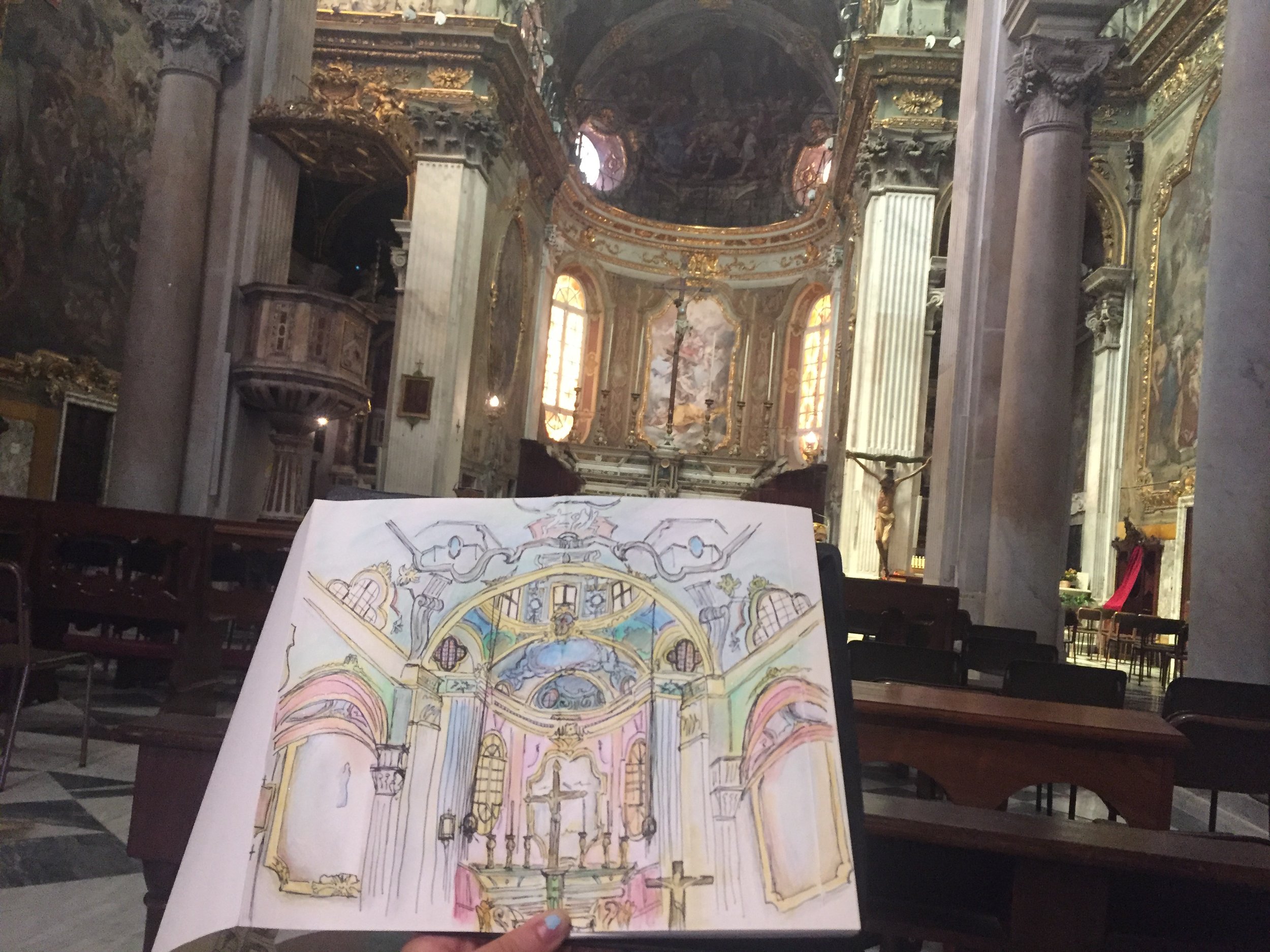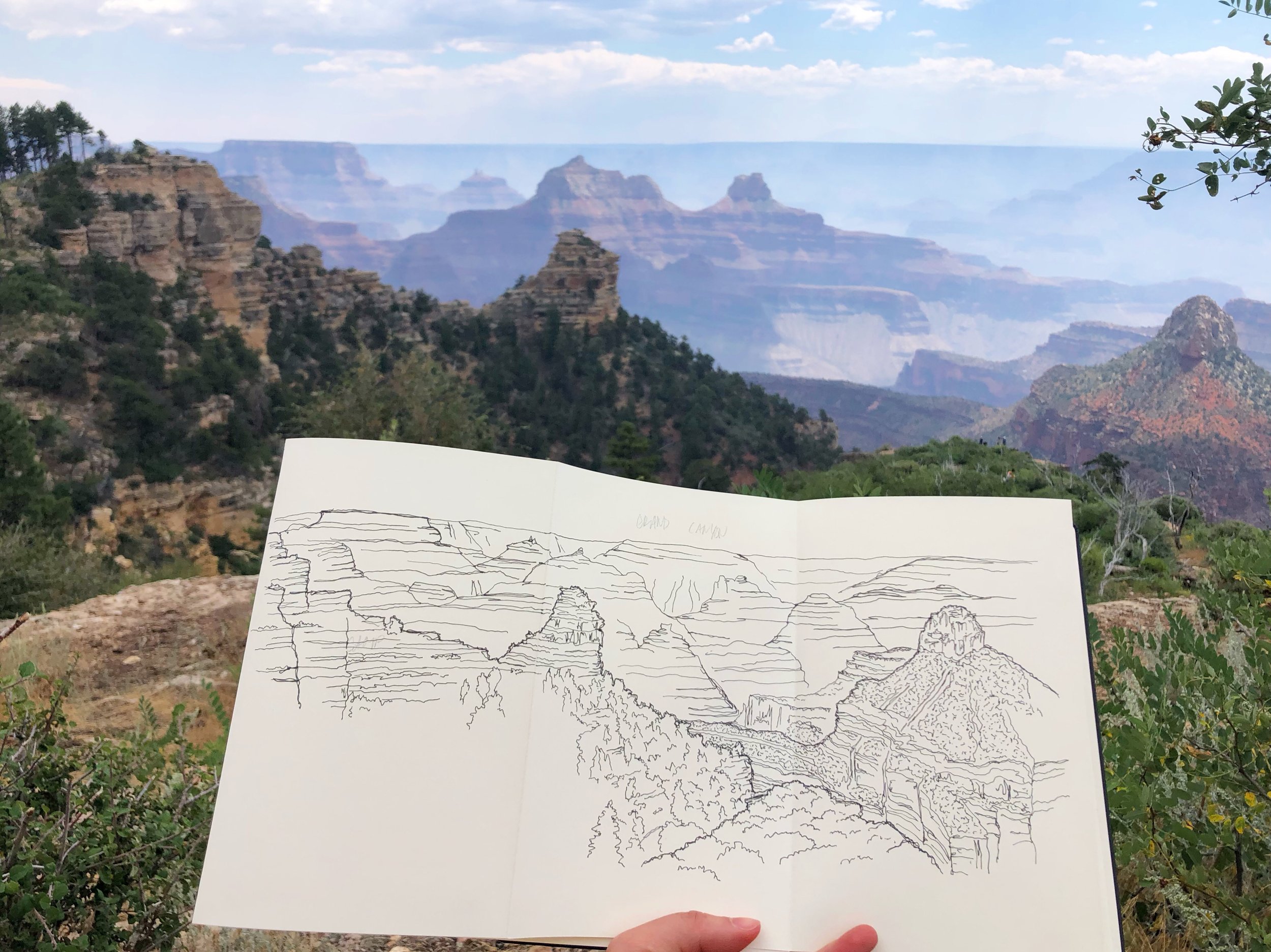Guide to: Urban Sketching
Last week I arrived early for a work trip to Toronto, Ontario and was able to spend a day and a half exploring the city. This included a visit to the Art Gallery of Ontario where I spent almost 5 hours wandering from room to room, admiring the artwork, and sketching. It was both an incredibly relaxing and invigorating day. Certainly not something that I make time for enough in my “regular” life. And I decided to use the opportunity to make a guide for urban sketching.
Urban sketching was part of my formal training as a graduate student in Resilient Urban Design, but truthfully, it’s something that I’ve been doing since I was a small child in art camp. These are some of the lessons and techniques I’ve learned along the way!
5 Tips for urban sketching:
Choose material based on texture, emotion and focus
Scale your drawing and subject to the page
Spend more time looking at the subject than your page
Draw shapes, and your drawing will end up looking like the subject
Wiggling your pen as you draw can make the lines appear straighter overall
Travel Watercolor brushes (like the ones here) are a great tool to add a watercolor effect without the mess of a full watercolor set and water cup. You can color with watercolor pencil and use the watercolor brush to soften the color or (my preferred technique) is to touch the brush to the tip of a watercolor pencil to gather color and paint it on in a traditional way. Squeezing the base of the watercolor brush to dilute color as desired.
The stairwell at the Art Gallery of Ontario (ink, marker and watercolor pencil)
Softer materials like charcoal, or a soft graphite create a less rigid drawing. They allow more opportunity to create depth and movement through shading and fluid markings. For these reasons, its my preferred material for sketching humans (and sculptures of humans).

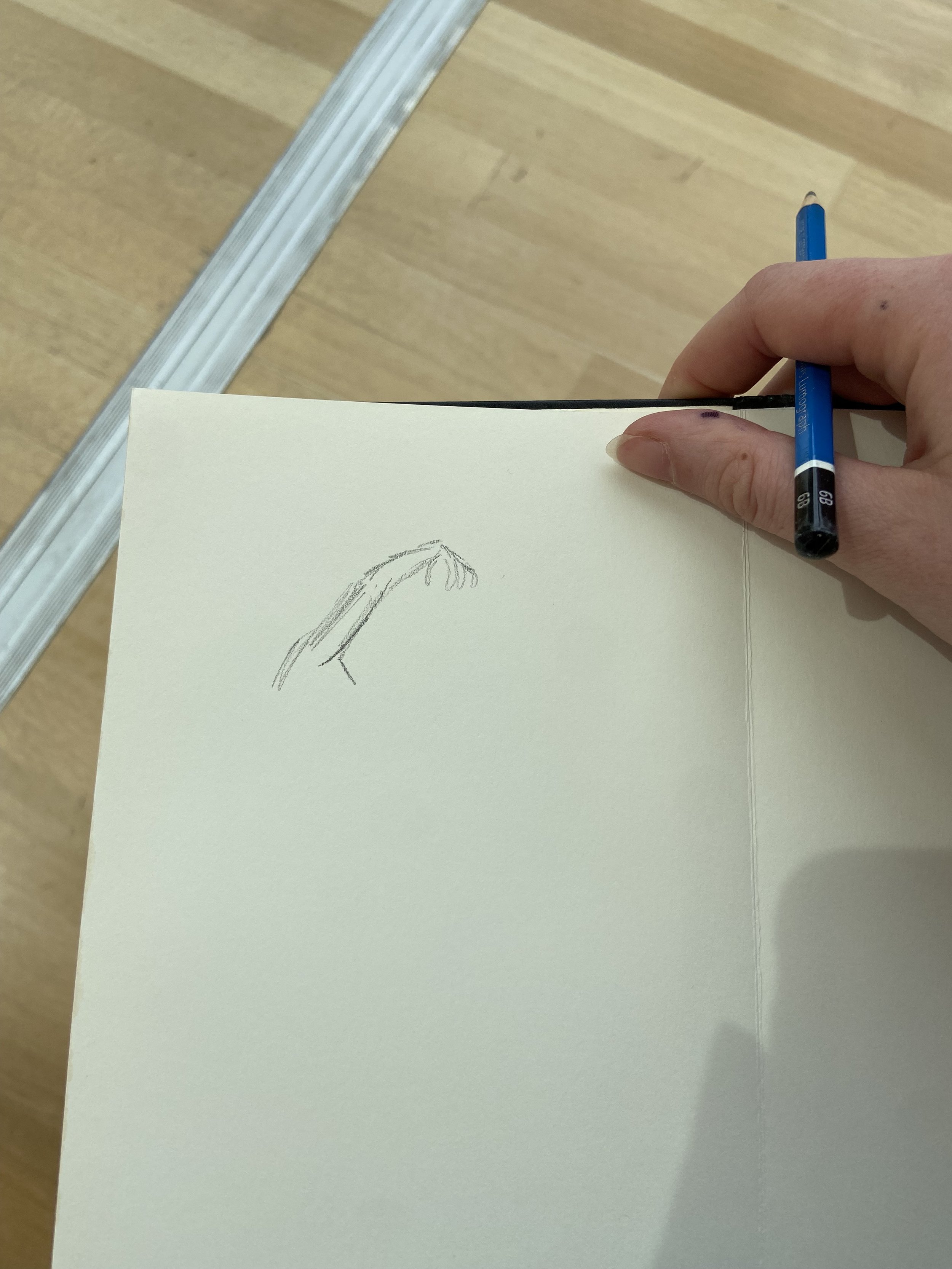
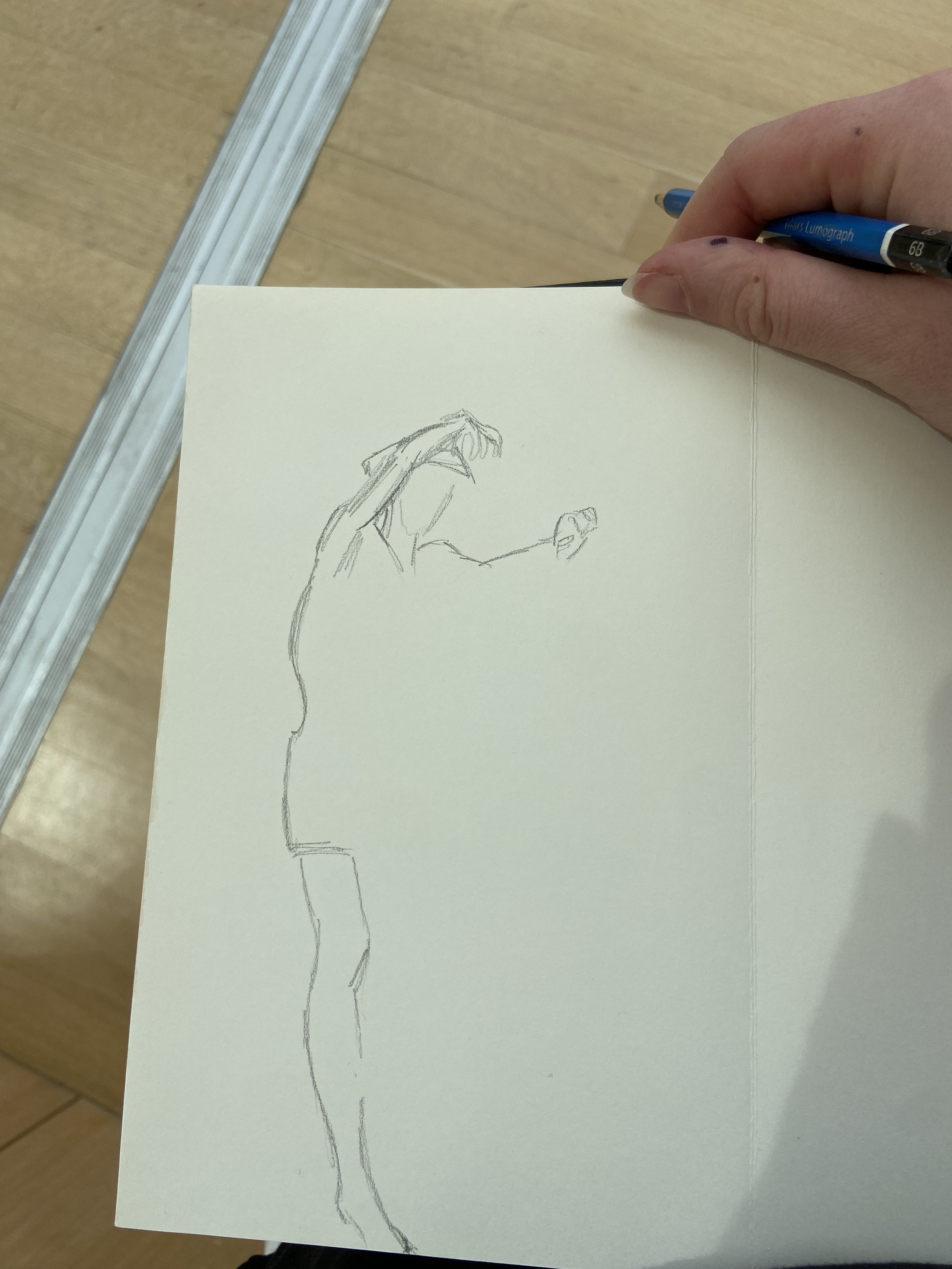

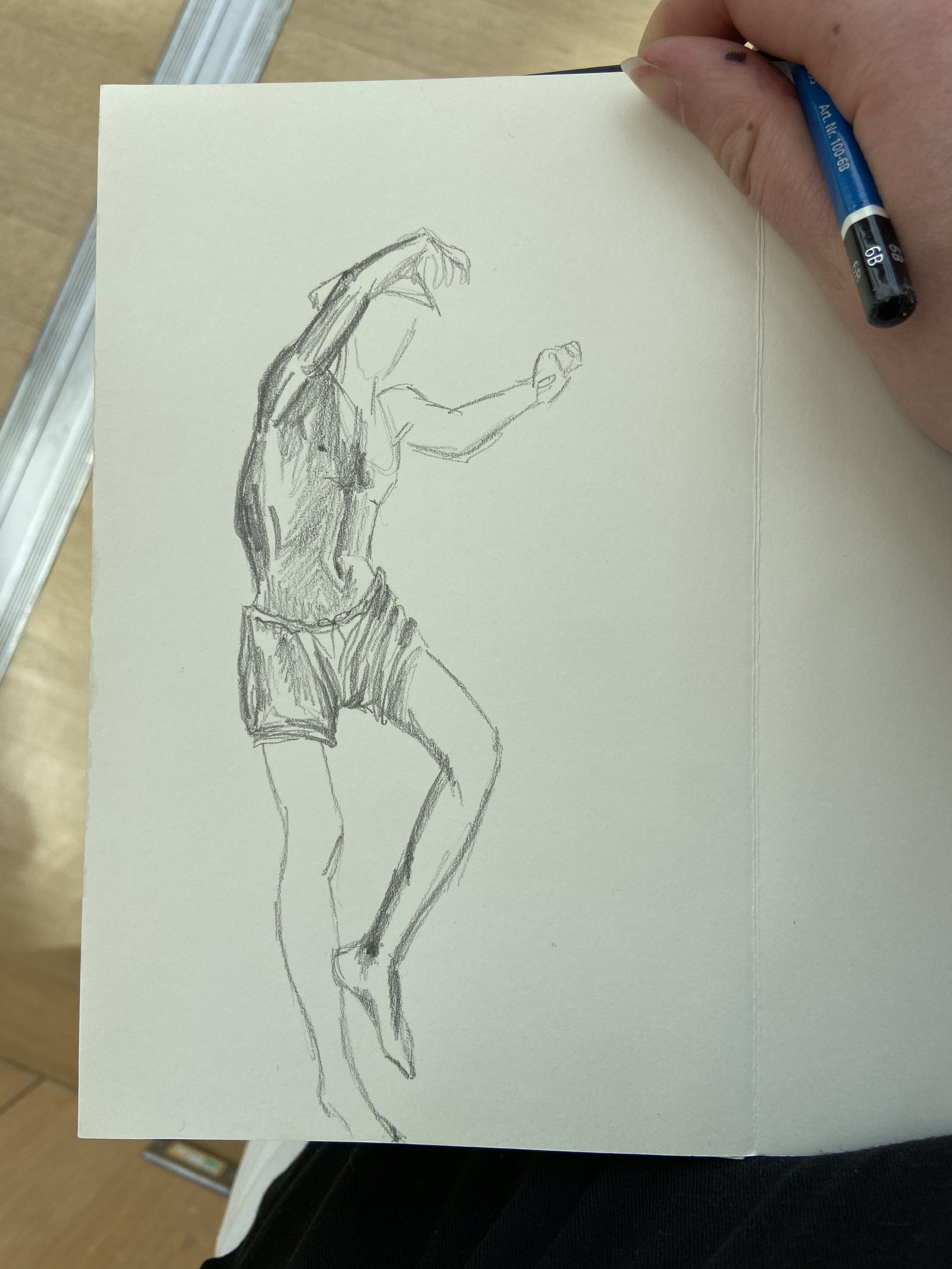

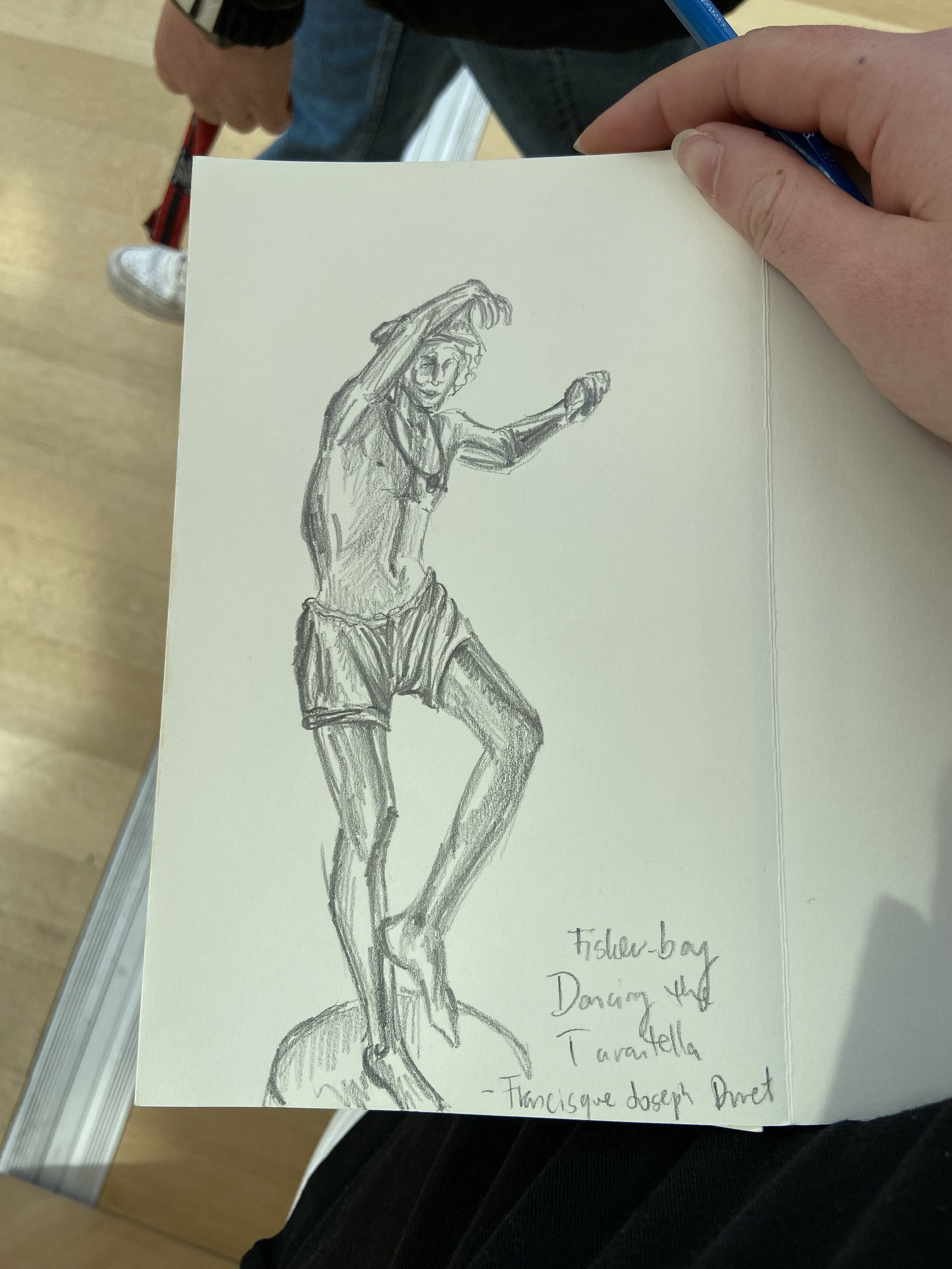
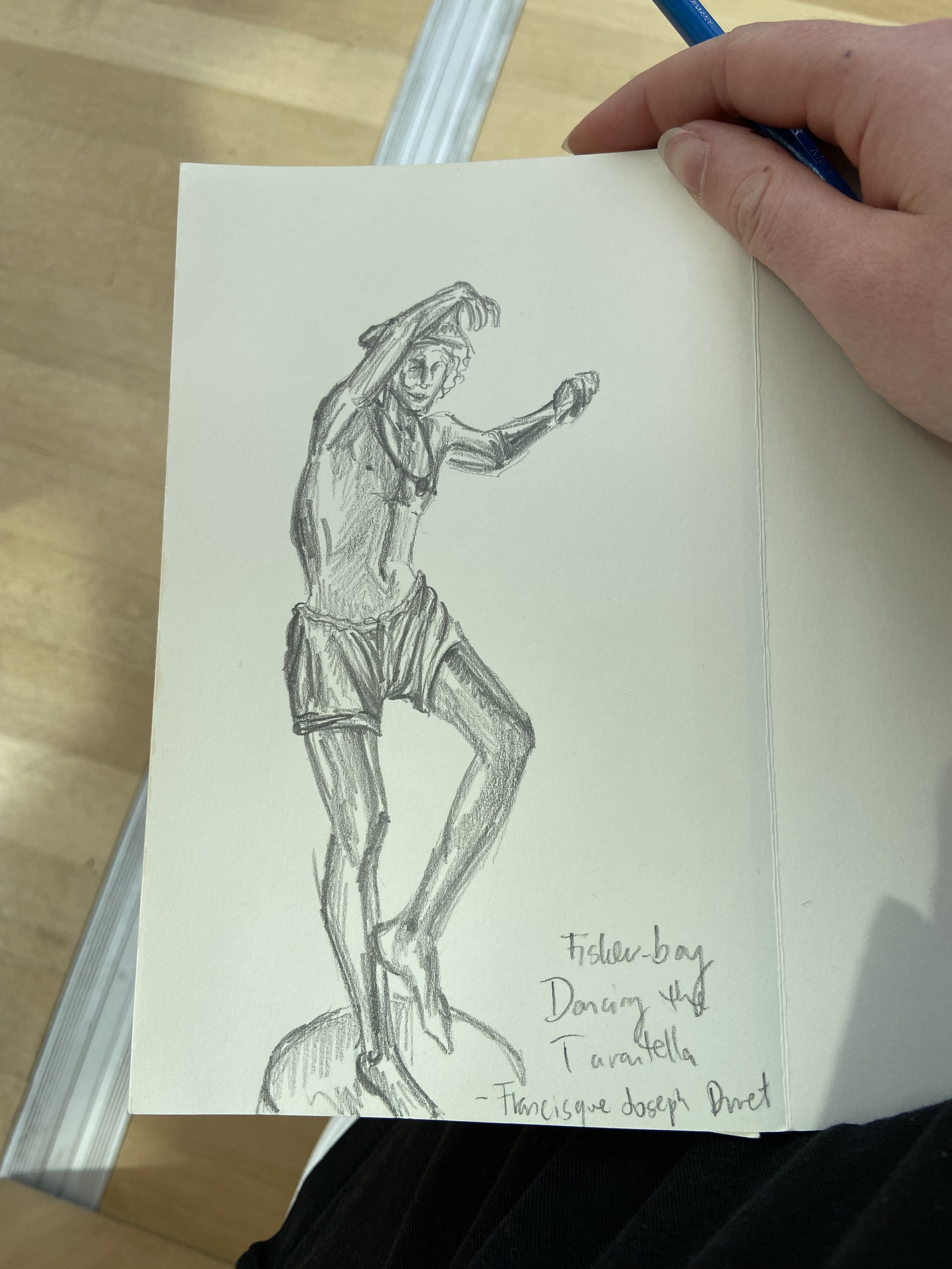
Process sketches of Fisher-boy Dancing the Tarantella by Francisque Joseph Duvet (6B graphite)
Sketching with wiggly lines and extended corners (so that they make a “t” or “x”) can actually make your lines appear more straight and accurate. Why does this work? When you draw something with straight lines and one or two lines are imperfect, your eye goes directly to them. When all the lines are wiggly and crossed, your eye understands the concept and doesn’t get distracted by “imperfect” lines.
Benches at the Staten Island Ferry Terminal, NYC (ink)
While I love a Moleskine style notebook with sketch paper thick enough to hold watercolor, my ultimate favorite book is this accordion style sketchbook. I love it because it allows your drawings to bleed continuously from one page to the next. I’ve used this particular style to create a sketchbook documenting a summer in Italy and a road trip from Denver Colorado to San Diego California in the summer of 2019.
A Japanese accordion style sketchbook of moments from a roadtrip from Denver Colorado to San Diego California. (mixed media)
Other urban sketching examples:
Bryant Park, NYC (ink)
Chapel in Castelletto, Genoa, Italy (ink, water colored pencil)
A mountainside cafe in San Fruttuoso, Liguria, Italy (ink)
The Grand Canyon, North Rim
(ink on site and watercolor pencil added at home)





